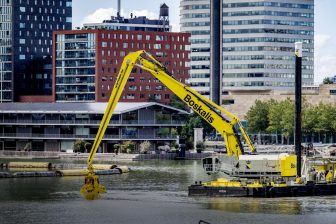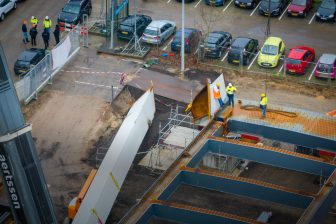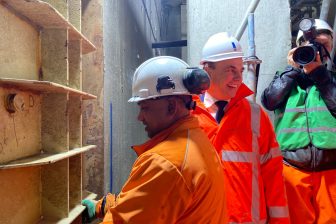Rehabilitation rural infrastructure Viet Nam
France and ADB support rural infrastructure rehabilitation in Viet Nam’s Central Region
MANILA, PHILIPPINES – France and Asian Development Bank (ADB) are assisting Viet Nam in rehabilitating and upgrading vital infrastructure in one of the poorest regions of the country to improve livelihood opportunities and the standard of living of the rural population in the area.
The Integrated Rural Development Sector Project, estimated to cost $168.2 million, will receive a $90 million loan from ADB’s Asian Development Fund. Agence Française de Développement will extend a $52 million loan and a $1.3 million grant for the project. The balance will be covered by the Government of Viet Nam.
The project will target critical rural infrastructure that have deteriorated over past decades due to war, natural disasters and budgetary constraints that have limited maintenance. They include rural roads, irrigation drainage and flood control systems, rural markets, domestic water supply schemes, and special coastal works such as sand dune stabilization, salinity intrusion prevention and mangrove rehabilitation. The project is expected to boost agricultural productivity and employment opportunities, as well as improve access to public services such as health and education. It will also reduce the exposure of the rural population to natural disasters.
The project area, comprising 13 provinces in the Central Region, has been identified by ADB and Viet Nam as a region of special focus for development investment due to its high poverty incidence. Surveys of the rural population and detailed consultations have shown that one of the main contributors to the high levels of poverty in the project area is the limited and deteriorating rural and coastal infrastructure, which has curtailed access to markets, inputs such as irrigation water, and public services.
“Poverty in Viet Nam is a rural phenomenon, focused to a large extent on the more isolated central and northern regions of the country. It especially affects ethnic minorities,” said Ahsan Tayyab, senior natural resources economist of ADB’s Southeast Asia Department. “Poverty reduction efforts need to focus on these areas and the particular problems poor communities face.”
The improvement in rural infrastructure in Viet Nam over the past decade is one of the reasons for the significant growth achieved in the agricultural sector and the decline in poverty. In the early 1990s, around 80% of the population lived in rural areas while the national level of poverty stood at 58.1%. Since then, Viet Nam has managed to bring down its overall poverty level to 23.2%, but those living in rural areas still account for 70% of the country’s population and the poverty level in those areas remain high. Those who have emerged from poverty are also still vulnerable to economic shocks that could undermine their achievements.
“Further investment in rural infrastructure, especially in the rural areas of the Central Region where poverty levels remain high, is crucial to removing the constraints on productivity in the project area and in contributing to poverty reduction efforts,” said Mr. Tayyab.
The government’s poverty reduction strategy and its latest socio-economic development plan place great emphasis on the provision of infrastructure at the national level and, more directly, at the provincial, district and commune levels through the bottom-up planning process in provincial development plans. The ADB country strategy and program for Viet Nam recognizes that priority and has identified limitations in physical infrastructure as one of the main hindrances to accelerated, private sector-led and socially inclusive growth.
U las zojuist één van de gratis premium artikelen
Onbeperkt lezen? Profiteer nu van de introductieaanbieding voor € 10,- per maand.
Bent u al abonnee?



